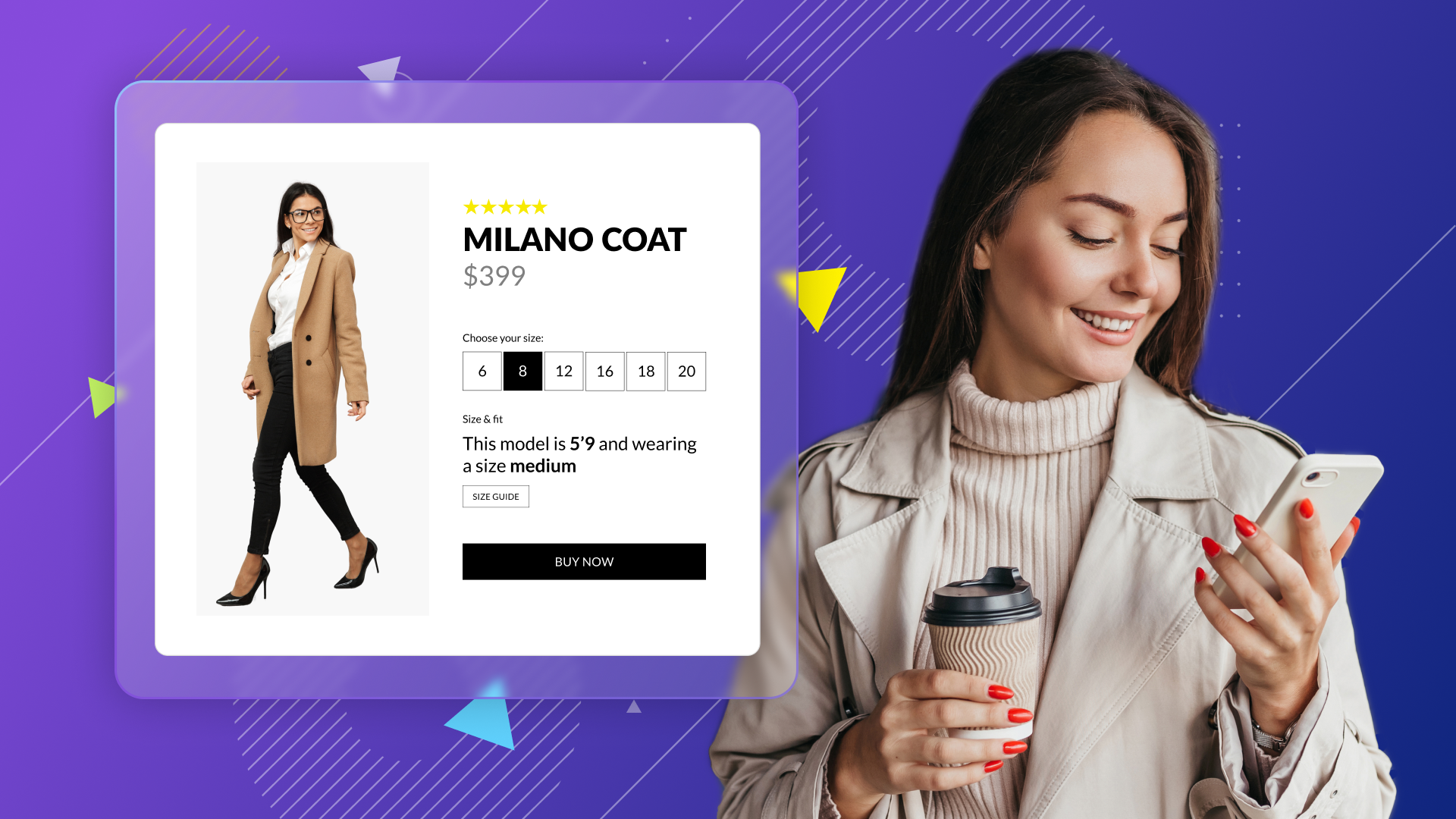Ecommerce has become incredibly competitive. With the barrier to entry being quite low, countless new stores pop up regularly, saturating the market and making it more challenging to capture the attention (and dollars) of shoppers.
What does this mean for brands?
If you want to stand out and convert more customers, you simply cannot compete on product or price alone—especially with shrinking margins. The best way forward is to improve the customer experience and ensure that every single brand interaction is top-notch.
Let’s look at the ways you can do just that.
Understanding the importance of customer experience
Improving the ecommerce experience is one of the most worthwhile investments you can make as an online merchant. Multiple studies have shown that customers are more likely to return to stores with excellent shopping experiences, and most (86%, according to data cited by SuperOffice) are willing to pay more.
On the flip side, a poor user experience can deter potential customers, increase cart abandonment rates, and tarnish your brand’s reputation. Research by PwC indicates that “One in three consumers (32%) say they will walk away from a brand they love after just one bad experience.”
Suffice it to say, the ecommerce customer experience isn’t just “important,” it’s absolutely vital to success.
The key elements of a successful ecommerce experience: mapping the customer journey
| Pre-purchase | Purchase | Post-purchase | |
|---|---|---|---|
| Description | All about product browsing and comparison | Customers make the decision to buy | Involves order tracking and follow-up communication |
| Assets involved | Product pages, website homepage, FAQs, trust signals, etc. | Checkout page, payment processor | Order tracking emails, order tracking page, returns portal, feedback forms |
| Tools and technologies | Ecommerce website, CRM | Shopping cart, payment processor | Order management system, post-purchase platform, CRM, returns management software |
The first step to improving the customer experience in ecommerce is to map it. When it comes to online shopping, customers typically go through three key phases:
The pre-purchase stage
The pre-purchase stage is exactly what it sounds like: it’s the part of the shopping experience where customers view and compare products, read reviews, and decide whether or not they trust your brand. This is the stage where they form their initial impressions, and it can heavily influence their decision to proceed with a purchase.
The purchase stage
At this point, the shopper decides to make a purchase. Here, they go through the checkout stage, where design and speed play pivotal roles. Clear pricing, multiple payment options, and transparency regarding shipping costs and delivery times can make or break the sale.
The post-purchase stage
Most people think the ecommerce experience ends after the checkout stage. But the fact is, what happens after the sale is just as (if not even more) important. This stage—which consists of order tracking, post-purchase communication, feedback, and returns—is an essential part of the journey.
Our research at parcelLab shows that the majority of consumers (53%) view it as the most emotional part of the shopping journey.
It’s crucial that we make the distinction between each of these stages. Every phase of the journey comes with its challenges, and you need to approach each one with a tailored strategy. In the next section, we shed light on the ways to optimize each phase.
Improving the pre-purchase customer experience
The pre-purchase stage is all about attracting and engaging potential customers. This can involve tactics like content marketing, search engine optimization, and online advertising.
That being said, this section will focus more on improving the pre-purchase experience when a customer has actually landed on your site.
Optimize the website experience
Create a streamlined website experience that enables customers to find the products and info they need easily. The first step is to optimize your website’s load times. Research from Google shows that “The probability of bounce increases 32% as page load time goes from 1 second to 3 seconds.”
So, it doesn’t matter how great your website is. If it’s not loading quickly, users are going to bounce.
Build trust
People buy from brands that they know, like, and, most importantly, trust. This is why having trust signals and social proof on your website is so important. These components reassure visitors about your brand’s credibility, which improves the likelihood of a purchase.
If you haven’t done so yet, add elements on your site that promote trust. These include:
- Product ratings and reviews.
- Media logos and press mentions.
- Photos and videos of real customers using your products.
Here’s a great example from Tea Drops, which has a section on its homepage dedicated to press reviews as well as mentions from prominent individuals—including Tory Burch and Michelle Obama.
Set the right expectations
While the job of your online store is to sell products, be careful not to oversell your offerings. Be upfront about what customers should expect with their purchase. This, once again, builds trust; plus, it keeps you out of hot water from regulators like the Federal Trade Commission.
To that end, you must clearly communicate:
- Product details. See that you have thorough and accurate product descriptions that offer specs, dimensions, or sizes. Avoid adding content that can be construed as false advertising.
- Return policy. Outline any guidelines and conditions under which returns are accepted. Be sure to let customers know about the allotted time frame for returns and any associated costs.
- Delivery timelines. Let customers know when they can expect the product to be delivered. parcelLab helps you do this using our Convert capabilities. With parcelLab, you can display a predictive delivery date that increases conversion rates and reduces consumer uncertainty.
Powered by our machine-learning algorithm, parcelLab Promise calculates estimated delivery dates based on your warehouse operations and corresponding delivery methods, accounting for ad hoc holiday updates, delivery method changes, multiple carriers, weather closures, and staffing shortages.
Have a look at this example from Farfetch, which uses parcelLab’s platform to provide delivery estimates on its product pages.
Personalize the experience
Strive to tailor the shopping experience to individual customers to make them feel valued and understood. Leverage your customers’ behavioral data and purchase histories to provide relevant product recommendations.
Taking the steps above will encourage your customers to move further along in their ecommerce journey. Your objective, of course, is to get them to the purchase stage.
Which brings us to the next step…
Listen in on how Yeti improved their customer experience with parcelLab
Watch nowImproving the purchase experience
The purchase stage is about simplicity and clarity. It’s not just about getting a user to click “buy” but ensuring they do so with confidence. Consider the following steps.
Streamline the checkout process
Keep the checkout quick and frictionless. The more steps or forms that shoppers have to complete, the higher the chances that they’ll abandon the purchase. As such, it’s worth considering options like guest checkout or letting customers save their preferences for faster future transactions.
Also, ensure that your checkout process is a breeze on mobile devices. With over 79% of consumers shopping via mobile, a clunky experience on the small screen simply isn’t acceptable.
Provide accurate delivery estimates
Accurate delivery estimates ensure customers have a clear understanding of when they’ll receive their purchases. That way, they know when they need to order and which shipping method to choose.
Beyond helping shoppers make more informed decisions, delivery estimates build trust. And as long as you keep your delivery promises, you can cultivate loyalty and encourage repeat purchases.
You can easily provide delivery estimates with parcelLab. Easily configure the estimated delivery date on the checkout page with our easy-to-use UI. Plus, you can monitor against forecasted dates and communicate with customers accordingly.
Make payments easy
You’re at the final stretch of the purchase stage. At this point, the customer is ready to pay and finalize their purchase. Make this step easy by accepting multiple payment options and keep transactions secure by implementing the latest security protocols.
Improving the post-purchase experience
You’ve successfully converted the customer, and their order is en route—great! The next step is to ensure they have a great post-purchase experience to improve the likelihood of additional purchases.
Here’s how you can do just that.
Send branded tracking emails
Branded tracking emails not only keep customers informed about their order status but also reinforce your brand presence and trust. These personalized touchpoints enhance the post-purchase experience and offer opportunities for further engagement and marketing.
Case in point: Bose partnered with parcelLab to design a series of branded post-purchase checkout emails that were sent from Bose.com. These bespoke solutions gave Bose more control over customer touchpoints so the company could reinforce its brand.
Bose saw tremendous results from the initiative, including:
- 79% open rates on transactional emails
- 9.4 additional new interactions per order
Set up a branded order tracking page
Rather than sending customers to a third-party tracking portal, consider setting up an order tracking hub on your own domain. That way, you retain control over the user experience and create opportunities for cross-selling or upselling while customers track their orders.
Check out this example from H&M, which leverages parcelLab’s platform to power its branded tracking page. By using parcelLab’s post-purchase platform, H&M’s customers are now informed about every step in the shipping process.
Streamlined returns
No retailer wants to deal with order returns, but in the event that they do happen, you still want to make the process as easy as possible. Similar to your order tracking page, it helps to create a branded returns portal that keeps users within your domain. Having a robust returns and warranty platform makes this simple.
In 2020, Conrad Electronic switched from an old-school returns system to a digital returns portal by parcelLab. Now, instead of receiving a physical return label with their orders, customers simply register their return online and get a printable label or a QR code on their phone.
Aside from providing a more sustainable solution, the new returns process enabled Conrad to better manage returns and streamline the experience both for customers and the brand’s internal teams.
Leverage customer feedback to drive improvement
We can provide the most amazing tips in this article, but bear in mind that the best customer experience will ultimately depend on your shoppers. To that end, make sure you’re actively collecting—and acting on—customer feedback. Their insights offer a direct line to understanding their needs, preferences, and pain points, which then help you make better customer experience decisions.
Prioritizing your customers’ voices not only improves your store but also demonstrates that you value and respect their input.
Bringing it all together
The ecommerce customer experience is broad and multifaceted. It’s not just about your website’s look and feel, nor is it only focused on pricing and products.
Improving the customer experience in ecommerce requires you to take a wide view of the shopping journey—including pre-purchase, purchase, and post-purchase. Take a look at each of these stages, identify areas of improvement, and optimize accordingly.
FAQ
The customer experience is the overall journey and interactions a customer has with a brand. It includes every touchpoint from the moment they land on a website to post-purchase interactions.
In ecommerce, the customer experience shapes shoppers’ perceptions, emotions, and responses to a brand’s offerings, services, and overall presence.
The first step to improving the customer experience in ecommerce is understanding and mapping the customer journey. The steps you’ll need to take to optimize the shopper experience depend on which stage they’re at—i.e., pre-purchase, purchase, or post-purchase.
Simply put, the better the customer experience, the better your store will perform.
Improving the customer experience directly influences purchasing decisions, customer loyalty, and brand reputation. Multiple studies indicate that customers are more likely to return to stores with an excellent shopping experience, with a significant percentage even willing to pay more for such experiences.
Written by





